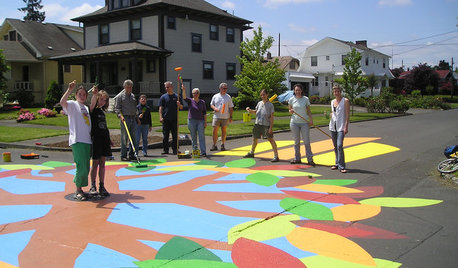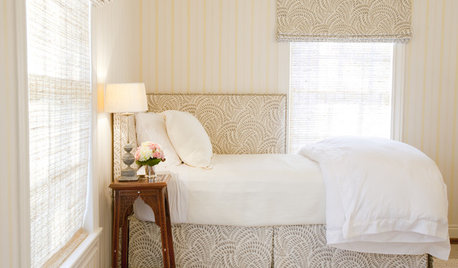Can anyone suggest a good tree for this area?
westgate
13 years ago
Related Stories

COMMUNITYCommunity Building Just About Anyone Can Do
Strengthen neighborhoods and pride of place by setting up more public spaces — even small, temporary ones can make a big difference
Full Story
MUDROOMSThe Cure for Houzz Envy: Mudroom Touches Anyone Can Do
Make a utilitarian mudroom snazzier and better organized with these cheap and easy ideas
Full Story
BUDGET DECORATINGThe Cure for Houzz Envy: Entryway Touches Anyone Can Do
Make a smashing first impression with just one or two affordable design moves
Full Story
BEDROOMSThe Cure for Houzz Envy: Master Bedroom Touches Anyone Can Do
Make your bedroom a serene dream with easy moves that won’t give your bank account nightmares
Full Story
HOME OFFICESThe Cure for Houzz Envy: Home Office Touches Anyone Can Do
Borrow these modest design moves to make your workspace more inviting, organized and personal
Full Story
CLOSETSThe Cure for Houzz Envy: Closet Touches Anyone Can Do
These easy and inexpensive moves for more space and better organization are right in fashion
Full Story
DECORATING GUIDES7 Bedroom Styling Tricks Anyone Can Do
Short on time or money? You can spruce up your bedroom quickly and easily with these tips
Full Story
KITCHEN DESIGNThe Cure for Houzz Envy: Kitchen Touches Anyone Can Do
Take your kitchen up a notch even if it will never reach top-of-the-line, with these cheap and easy decorating ideas
Full Story
BUDGET DECORATINGThe Cure for Houzz Envy: Living Room Touches Anyone Can Do
Spiff up your living room with very little effort or expense, using ideas borrowed from covetable ones
Full Story
DECORATING GUIDESThe Cure for Houzz Envy: Guest Room Touches Anyone Can Do
Make overnight guests feel comfy and cozy with small, inexpensive niceties
Full Story







botann
westgateOriginal Author
Related Professionals
Carson Landscape Architects & Landscape Designers · Chattanooga Landscape Architects & Landscape Designers · Suffern Landscape Architects & Landscape Designers · Walnut Landscape Architects & Landscape Designers · College Park Landscape Contractors · Darien Landscape Contractors · Hawaii Landscape Contractors · New Cassel Landscape Contractors · Santa Maria Landscape Contractors · Seymour Landscape Contractors · Antioch Fence Contractors · Englewood Fence Contractors · New Haven Fence Contractors · Sammamish Fence Contractors · Westmont Fence ContractorsEmbothrium
botann
westgateOriginal Author
westgateOriginal Author
Embothrium
Embothrium
botann
westgateOriginal Author
Embothrium
Embothrium
gardengal48 (PNW Z8/9)
Embothrium
westgateOriginal Author
Embothrium